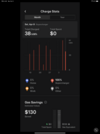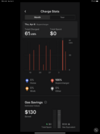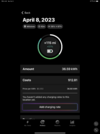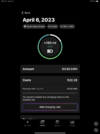I would like to address everyone who uses the EEVEE program and knows how the statistics of the Tesla application are kept. I have encountered a very strange problem. The charging statistics in both programs are different and significantly different. And I understand if it was always more in one program and less in the other. But here everything is completely unpredictable. For example yesterday the Tesla showed 38 kW taken from the supercharger and EEVEE showed 36.59
Last week Tesla read 61 kW and EEVEE read 63.65 kW.
How do I explain this difference and which statistic to believe? I understand that Space X can land a launch stage from 120 km altitude on a barge in the open ocean, but why can't Tesla calculate exactly how much its car takes when charging and where that electricity goes (battery heating, cabin cooling/heating), screen, etc. I understand that the engineers in these companies are different, but to be so...
I have a free supercharger and so I don't know how much my car REALLY takes when charging since Tesla doesn't charge me for it.
Last week Tesla read 61 kW and EEVEE read 63.65 kW.
How do I explain this difference and which statistic to believe? I understand that Space X can land a launch stage from 120 km altitude on a barge in the open ocean, but why can't Tesla calculate exactly how much its car takes when charging and where that electricity goes (battery heating, cabin cooling/heating), screen, etc. I understand that the engineers in these companies are different, but to be so...
I have a free supercharger and so I don't know how much my car REALLY takes when charging since Tesla doesn't charge me for it.







